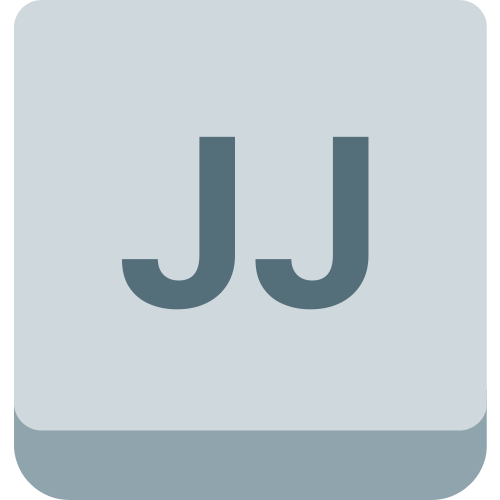When embarking on a home renovation or any project in the modern world, choosing the right management approach can make the difference between a smooth experience and a frustrating one. Whether you’re planning a kitchen remodel, garden overhaul, or even a property development, understanding different project methodologies is crucial for success. The two dominant approaches – Agile and Waterfall – offer distinct advantages depending on your specific needs and circumstances. As Casa Jedo readers know, thorough planning is essential whether you’re renovating a small space or constructing an entire home.
Understanding Project Management Methodologies
Project management methodologies provide structured frameworks that guide how teams plan, execute, and complete projects. These approaches have evolved significantly over time, moving from traditional linear models to more flexible and adaptive systems that respond to the increasingly complex and dynamic nature of modern projects, especially in areas like home renovation and property development.
The Evolution of Project Management Approaches
Historically, project management began with straightforward, sequential approaches that worked well for construction and manufacturing. As industries diversified and technology advanced, new methodologies emerged to address the unique challenges of different project types. Today’s project management landscape includes numerous frameworks, but Waterfall and Agile stand as the two foundational methodologies that have influenced countless others. The interior design and renovation sectors have particularly benefited from these evolving approaches, allowing for more creative collaboration and customer-focused outcomes.
Core Principles of Effective Project Orchestration
Regardless of the specific methodology chosen, effective project management relies on several universal principles. These include clear communication channels, thoughtful resource allocation, comprehensive risk management, and well-defined objectives. Successful project orchestration requires balancing these elements while maintaining focus on delivering value to stakeholders. In home improvement projects, this translates to creating spaces that truly meet the homeowner’s needs while respecting budgetary and time constraints.
Exploring the Waterfall Methodology
The Waterfall methodology represents one of the oldest and most straightforward approaches to project management. It follows a linear, sequential flow where each phase must be completed before the next begins. This methodology originated in manufacturing and construction industries but found widespread application in software development and other fields requiring structured processes.
Sequential Structure and Linear Progress Tracking
Waterfall projects progress through distinct phases: requirements gathering, design, implementation, verification, and maintenance. Each phase produces specific deliverables that serve as inputs for subsequent stages. This clear delineation makes progress tracking straightforward, as teams can easily determine which phase they’re in and what remains to be completed. For renovation projects with well-defined requirements, such as bathroom remodels or kitchen upgrades, this approach provides reassuring structure and predictability for homeowners.

Ideal Project Scenarios for Waterfall Implementation
Waterfall methodology excels in projects with stable, well-understood requirements and minimal likelihood of significant changes. It works particularly well for renovation projects where outcomes are clearly defined from the outset, such as installing specific fixtures or following established building codes. The thorough documentation generated throughout the Waterfall process creates valuable reference materials for future maintenance or expansions. Real estate developments with predetermined specifications and regulatory requirements often benefit from this methodical approach, which minimizes unexpected complications during execution.
Diving into Agile Methodology
Agile methodology emerged as a response to the limitations of traditional project management approaches, particularly in environments where requirements frequently change. Unlike Waterfall’s linear progression, Agile embraces an iterative approach that delivers value incrementally while adapting to evolving project needs. This flexibility makes it increasingly popular in creative industries including interior design and custom home building.
Iterative Development and Flexibility Benefits
The core strength of Agile lies in its iterative cycles, commonly known as sprints. These short work periods, typically lasting one to four weeks, focus on completing specific deliverables that provide immediate value. After each sprint, teams review progress, gather feedback, and adjust plans accordingly. This approach allows for early identification of issues and continuous refinement of the final product. For homeowners undertaking complex renovations, this means seeing tangible progress sooner and having opportunities to refine design choices before major construction phases begin.
Team Dynamics and Collaboration in Agile Environments
Agile methodologies transform how teams work together by emphasizing close collaboration, self-organization, and shared responsibility. Daily stand-up meetings keep everyone aligned on progress and obstacles, while retrospectives after each sprint facilitate continuous improvement. This collaborative environment fosters creativity and problem-solving, making it particularly effective for interior design projects where aesthetic considerations and practical functionality must harmonize. Agile teams typically develop stronger communication skills and greater adaptability, enabling them to navigate the unexpected challenges that often arise during home improvement projects.
Comparing Resource Allocation Between Methodologies
How resources are allocated and managed represents one of the most significant differences between Agile and Waterfall approaches. Each methodology creates distinct patterns of resource utilization that can dramatically impact project economics and team dynamics. Understanding these differences helps project owners make informed decisions about which approach best suits their specific circumstances and available resources.
Budget Management Differences and Considerations
Waterfall projects typically require detailed upfront budgeting, with costs calculated for the entire project lifecycle before work begins. This provides financial predictability but offers limited flexibility if circumstances change. Conversely, Agile approaches budget incrementally, allowing for adjustments between iterations as priorities evolve. For homeowners planning renovations, the Waterfall approach might provide more comfort around total costs, while Agile offers more opportunities to redirect spending as the project progresses. In gardening projects, for instance, Waterfall budgeting works well for standard landscaping, while Agile might better suit experimental garden designs where elements may need adjustment based on how plants interact.
Team Structure and Resource Distribution Strategies
Waterfall projects typically organize teams hierarchically, with specialists working primarily within their domains of expertise. Resources are allocated according to project phases, with different specialists engaged sequentially as the project progresses. Agile teams, however, tend to be cross-functional and self-organizing, with members collaborating throughout the project lifecycle. This difference significantly impacts how human resources are managed and developed. In construction and renovation contexts, Waterfall structures work well for projects requiring specialized tradespeople at specific stages, while Agile approaches excel when design and implementation teams need to collaborate continuously to solve complex architectural or interior design challenges.
Decision Factors for Methodology Selection
Selecting the appropriate project management methodology requires careful consideration of numerous factors specific to your project’s nature, constraints, and objectives. Making the right choice can dramatically improve your chances of success while minimizing frustration and resource wastage. This decision becomes particularly important in home improvement projects, where budgets, timelines, and livability during construction all create significant constraints.
Project Scope and Requirement Stability Assessment
The clarity and stability of your project requirements should heavily influence your methodology choice. Waterfall works best when requirements are well-understood and unlikely to change significantly. For example, installing standard kitchen cabinets or bathroom fixtures with predetermined specifications fits this model well. Conversely, Agile shines when requirements may evolve, such as in open-concept renovations where spatial flow might need adjustment based on lived experience. Evaluating how confidently you can define your end goals upfront provides crucial guidance on methodology selection. Projects with regulatory constraints, like historical property renovations, might benefit from Waterfall’s documentation focus, while unique custom designs might flourish under Agile’s iterative approach.
Organisational Culture and Team Capability Evaluation
The cultural context and team capabilities within your organization significantly impact which methodology will succeed. Waterfall approaches align with hierarchical structures that value predictability and specialized expertise. They work well with teams accustomed to detailed planning and sequential work patterns. Agile methodologies thrive in environments that embrace collaboration, adaptability, and shared decision-making. For home renovation projects, consider whether your contractors are comfortable with regular feedback and iterative changes, or whether they prefer comprehensive blueprints and specifications upfront. The best methodology aligns with not only the project requirements but also with how your team naturally works and communicates.
